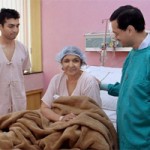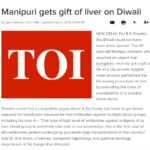Pre-Transplant evaluation
The evaluation is suggested when the liver disease is diagnosed to be at the end-stage, by the liver specialist. The recipient evaluation takes 5 to 7 days to do three phases in the hospital.
- It is done in establish definite diagnosis, to determine the severity of the disease and also the urgency the transplant to be done.
- It is done for determining the patient’s fitness towards the transplant. It is important to check the other systems like lungs, heart, blood counts and kidneys for infection to rule out. The success of the transplant to be likely is then decided by the liver specialist based on the cause of the disease, severity of the disease and the status of the patient.
- The third phase involves the preparation of the patient mentally and psychologically. The procedure, stay in the hospital, likely course immediately after the surgery, aftercare and the corresponding follow up are to be counseled for the patient as well as the family members.
After these three phases of evolution, the transplantation is scheduled, after the availability of the family donor matching the blood group and willing. Otherwise the patient is placed on the waiting list for the purpose of cadaveric donation.
When the patient is placed on the waiting list for the purpose of cadaveric donation, the patient needs to follow up the team of transplant for the availability of the suitable liver donor. In a few cases, where the signs of deteriorating condition are found from the patient, physician suggests the family members for the consideration of the family living liver donation.
PREVENTION OF THE LIVER DISEASES
Liver Cancer Prevention
Liver cancer can be possibly prevented in two levels. The first level is avoiding the alcohol abuse and also needs the prevention of occurrences of Hepatitis C or Hepatitis B. these conditions do get acquired through the infections by means of blood or in some rare cases, other secretions, sexual route or sharing of the needles that are infected among the drug addicts. Such conditions can be avoided by strict universal screening of blood donors to be done on the blood banks, using disposable needles in the clinics, refusal of donations from the infected persons. Universal vaccination for the new born is done to stop the spread of Hepatitis B. rest of the non-infected population is also needed to avoid the spread of Hepatitis B.
The second level is needed to be done for the patients, having liver cirrhosis, needed for the prevention. A good proportion of them will possibly develop the cancer. It is possible to be avoided if the infected people would undergo liver transplant timely or if needed the liver is removed. Patients with cirrhosis need to consult the liver specialists to explore the need of the liver transplantation for them.
Cirrhosis Prevention
There are three common causes found for cirrhosis, called viral Hepatitis B, Hepatitis C and alcoholism. It may also result through genetically determined diseases like metabolic disorders like Wilson’s disease in children, autoimmune hepatitis primary sclerosing cholangitis that usually cannot be prevented and primary biliary cirrhosis.
Spread of viral hepatitis prevention
Proper Hygiene: It is the important key or factor to prevent the spread of the diseases like Hepatitis.
Vaccination: Toddlers are needed to be given a Hepatitis B vaccine in the immunization schedule. Hepatitis A can be considered for the people having contracted disease risk while travelling. There are no vaccines found for Hepatitis E, D and C)
Blood Transfusion: The blood routines are necessary to be screened especially for the HIV, Hepatitis B and Hepatitis B for reduction of transfusion infection risk.
Antibody Preparation: An antibody preparation is administered for protecting people exposed to Hepatitis B from the contracting the disease.
The prevention of Hepatitis B and C are generally aimed mandatory at the high risk situations and high risk groups like,
- Unsafe Blood Transfusion
- Surgical Procedures or Dental Manipulation
- Dialysis
- Unprotected sexual exposure
- Intravenous drug abuse
- Hepatitis B or C found in family
- Medical or paramedical personnel
Liver Transplant Operation in Delhi, India
The procedure of the liver transplant does vary according to the condition of the patient and sometimes, in the practices of the liver specialist or physician. However, the process should follow the following tasks.
- Initially, before the operation, the doctor explains the procedure to the patient and so the patient can ask any questions related.
- Before the surgery starts, the patient needs to sign on the consent. It should be read carefully by the patient and sign it.
- A gown is given to wear for the patient after removing the clothes.
- An intravenous line is started with the hand. The blood samples are obtained and status of the blood pressure and heart is monitored by inserting catheters on the wrist and neck of the patient.
- Patient is laid on the operating table on his or her back.
- The excessive hair, if any in the surgical site, it would be clipped off.
- Another catheter is inserted into the bladder for draining the urine.
- The patient is sedated and then a tube is inserted into the lungs by the anesthesiologist. It helps to control breathe through the ventilator.
- Antiseptic solution is then used to cleanse the skin on the surgical site.
- A slanting incision is done under the ribs on the abdomen of its both sides. This incision is then extended for a short distance towards straight up towards the breast bone.
- The diseased liver is carefully separated from the structure and surrounding organs.
- Then the veins that are attached to it are clamped in order to stop the flow of blood towards the diseased liver.
- Different surgical techniques are practiced based on the type of transplant, either portion or entire liver is to be removed.
- The diseased liver is cut off from the connected blood vessels and then removed safely.
- The donor liver is visually inspected and then implanting is done.
- The liver taken from the donor is then attached to the corresponding blood vessels.
- Then establishment of the flow of blood to the new liver is done and then suture lines are checked.
- Then the new liver is connected carefully to the bile ducts.
- Then the incision is closed and a drain is placed on this site for reducing the swelling.
- Finally, dressing or sterile bandage is then applied.



